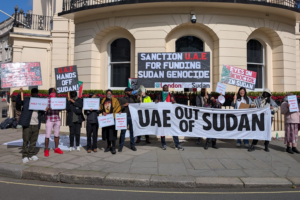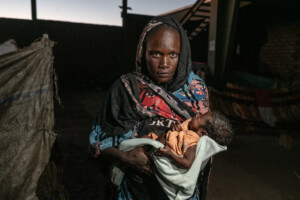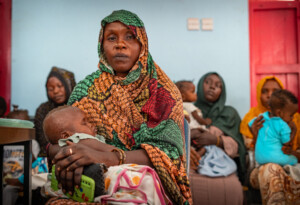233 Darfuri women graduate as midwives
At a festive ceremony in Khartoum’s Friendship Hall on Tuesday, hundreds of young women from Darfur graduated as community midwives, prepared to work for the survival of children and mothers in rural communities.
The group of 233 women is the first to complete a new pre-service midwifery training course – a programme supported by the United Nations Children’s Fund (Unicef) Sudan and the European Union, in collaboration with the Sudanese Ministry of Health. The aim of the course is to address child survival and maternal health in conflict-stricken Darfur.
At a festive ceremony in Khartoum's Friendship Hall on Tuesday, hundreds of young women from Darfur graduated as community midwives, prepared to work for the survival of children and mothers in rural communities.
The group of 233 women is the first to complete a new pre-service midwifery training course – a programme supported by the UN Children's Fund (Unicef) Sudan and the EU, in collaboration with the Sudanese Ministry of Health. The aim of the course is to address child survival and maternal health in conflict-stricken Darfur.
“I’m so happy and excited,” says Hafsa Abakar, one of the participants. “I’ve never been to anything like this before.” The graduates are joined by more than 250 trainee midwives due to complete the course by mid 2016, as well as the vice-president of Sudan, federal and state ministers, and members of the UN family.
Decrease in child mortality rate
According to the recent Sudan Multi-Indicator Cluster Survey 2014, under-five mortality has decreased over the last two decades in Sudan, from 104 deaths per thousand live births in 1996 to 68 deaths per thousand live births in 2014.
Similarly, the percentage of pregnant women attending antenatal care services has increased from 74 percent in 2010 to 79 percent in 2014, while those assisted by skilled birth attendants during delivery grew to 77.7 percent from 72.5 percent during the same period.
Despite these gains, child survival and maternal health remain a challenge. Every year in Sudan, approximately 4,600 mothers die during pregnancy, during child birth or immediately afterwards, according to Trends in Maternal Mortality: 1990 to 2013. Newborn deaths number 34 per thousand, according to the Sudan Household Health Survey 2010.
The survey further revealed that Darfur itself has some of the country’s worst child death statistics, with as many as 335 per 100,000 live births in South Darfur state, compared to the national average of 216 per 100,000. In addition, only 20.5 per cent of births are ‘institutional’ deliveries.

Darfuri women who have completed their midwife training attend
the graduation ceremony at Friendship Hall in Khartoum, Sudan (Hamdein/Unicef)
More students from Darfur
“Investment in community resilience is crucial for a peaceful and prosperous Sudan with child rights at the core,” says Unicef Sudan Representative Geert Cappelaere.
The Darfur Basic Service Programme (DBSP), an initiative developed by Unicef and the EU, in conjunction with Sudan’s federal and state Ministries of Health, plans to include students from North, West, and Central Darfur states and to train several hundred midwives by the end of 2016. The course is open to girls between 18 and 27 years-old who have a secondary-school certificate.
Training new midwives is not cheap: It costs around $3,000 per candidate for two academic years. However, partners such as the EU and the Japan government provide sustained support to the programme.
Motivated by tragedy
A few months before the graduation ceremony, Unicef spoke to three trainees about the experiences of Sudanese mothers living in rural areas of the country. One of them was Hafsa Abakar. The 27-year-old lost her sister when she died of excessive bleeding during childbirth.
“Nobody took care of her, because nobody knew what to do,” Hafsa says. “This was what motivated me to take on this course and save other lives.”
She gives an example of the simple training that could solve what otherwise might become a serious problem in her home village of Rajaj, in South Darfur. “I assisted one delivery during my training where the woman had her baby, but the placenta got stuck inside her womb,” she says, referring to a ‘normal problem’ in rural communities that sometimes proves fatal for mothers.
“I massaged her uterus, but nothing happened. After that, I gave the baby to the mother’s breast. When the child started to suck the mother’s nipple, the placenta gradually came down.”
“I almost panicked,” Hafsa says, now smiling. “But I started to practise what I had been taught.”
(Unicef)











 and then
and then